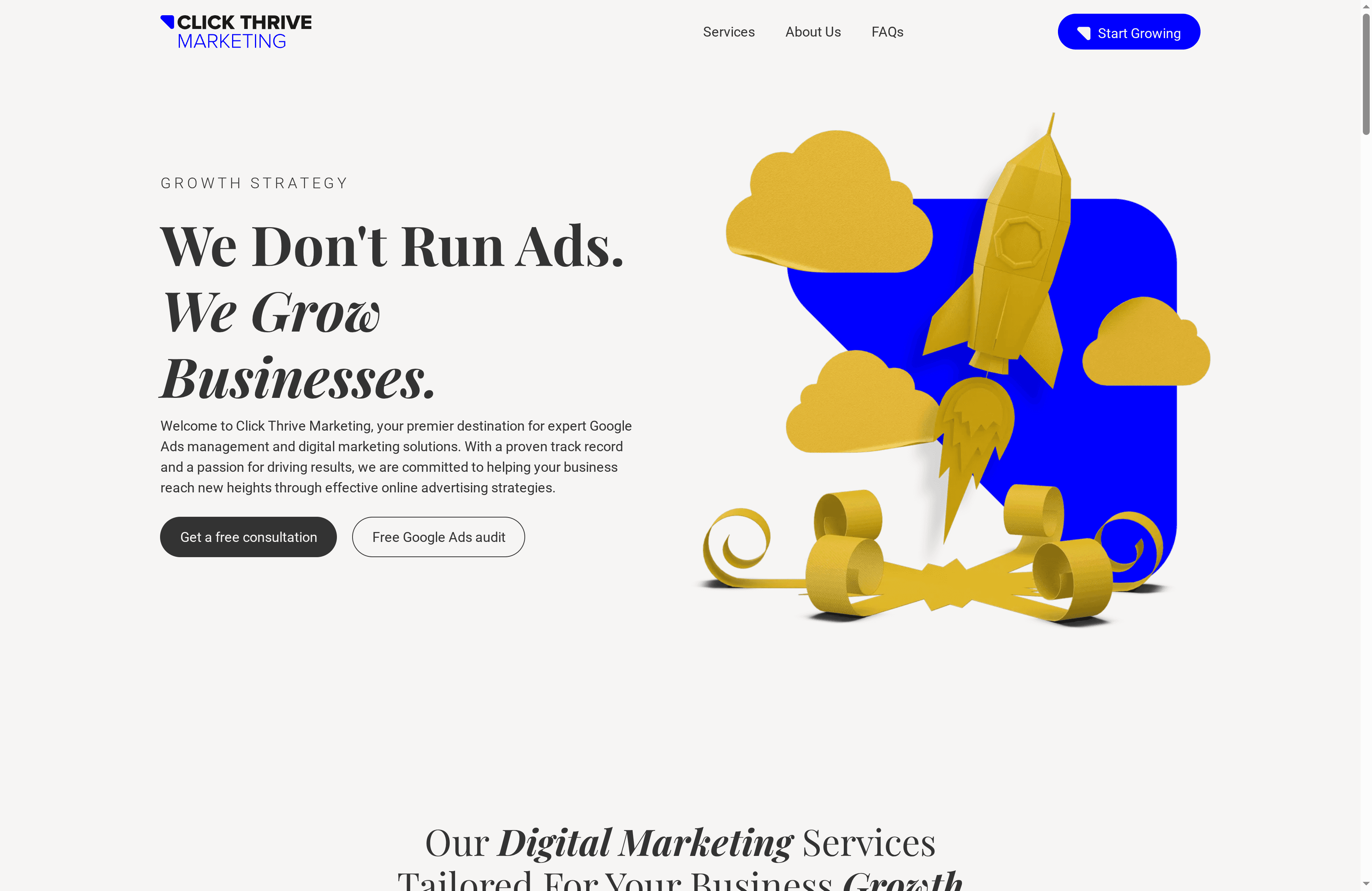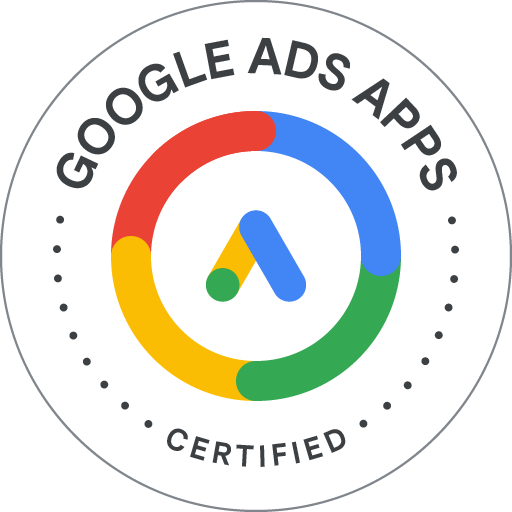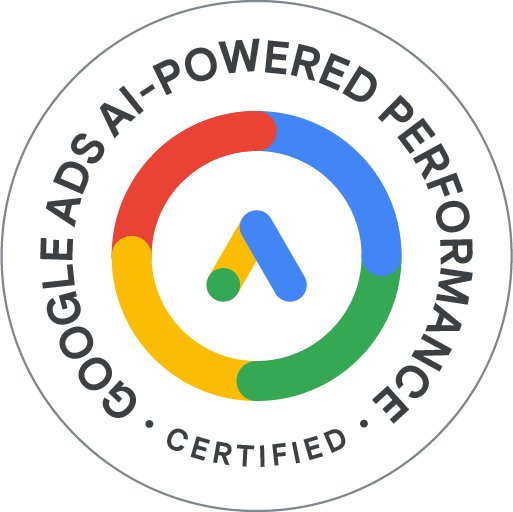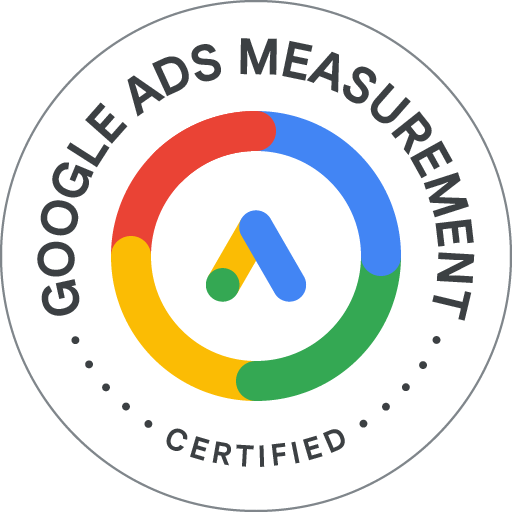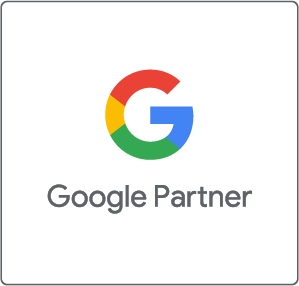Over 80 percent of businesses waste Google Ads budget by not setting clear goals from the start. If you own a local business, you already know that every dollar counts—and so does every click. A laser-focused strategy can mean the difference between winning new customers and watching your ads disappear with no results. This guide breaks down practical steps that help real businesses turn online ads into real leads and sales.
Table of Contents
- 1. Define Clear Campaign Goals For Google Ads Success
- 2. Target The Right Audience Using Local Keywords
- 3. Structure Campaigns For Easy Tracking And Control
- 4. Write Compelling Ad Copy That Increases Clicks
- 5. Optimize Landing Pages To Convert More Leads
- 6. Monitor Performance Metrics And Adjust Regularly
- 7. Use Smart Bidding Strategies To Maximize ROI
Quick Summary
| Takeaway | Explanation |
|---|---|
| 1. Define Specific Campaign Goals | Clear goals guide strategy, from budget to targeting, ensuring ad spend effectiveness. |
| 2. Use Local Keywords Strategically | Local keywords attract customers actively searching for your services, maximizing relevance and conversion potential. |
| 3. Structure Campaigns for Tracking | A well-organized campaign structure allows for precise tracking and performance optimization, making improvements easier. |
| 4. Write Compelling Ad Copy | Persuasive ad copy captures attention and motivates clicks, improving engagement and conversion rates significantly. |
| 5. Monitor Metrics Regularly | Regularly analyzing performance metrics enables informed adjustments, optimizing advertising strategies for better returns. |
1. Define Clear Campaign Goals for Google Ads Success
Successful Google Ads campaigns start with one critical foundation: crystal clear goals. Your campaign objectives act as the strategic compass guiding every marketing decision, from budget allocation to audience targeting. According to Google Ads, businesses can focus on specific outcomes like generating leads, increasing online sales, boosting offline conversions, enhancing brand awareness, or promoting mobile applications.
Defining precise goals transforms your advertising from scattered shots to a targeted approach. Without clear objectives, you risk wasting ad spend and missing meaningful business growth opportunities. Specific campaign goals help you:
- Select the most appropriate ad formats
- Choose relevant targeting options
- Design compelling ad creatives
- Measure actual marketing performance
Think of your campaign goals as a roadmap. Just like you would not start a journey without knowing your destination, you cannot launch a Google Ads campaign without understanding exactly what success looks like for your business. Whether you want to drive more foot traffic to your local store, generate qualified leads, or increase online sales, your goals will determine every subsequent strategic decision.
To define effective goals, ask yourself: What specific business outcome will prove this campaign was worthwhile? How will I measure success? Your answer should be specific measurable and directly tied to your business growth. For local businesses, this might mean tracking phone calls, form submissions, appointment bookings, or direct sales attributed to your Google Ads campaign.
Remember that Google Ads emphasizes aligning your campaign objectives with solutions that can help you achieve those precise outcomes. Your goals are not just abstract concepts they are the strategic blueprint for transforming advertising spend into tangible business results.
2. Target the Right Audience Using Local Keywords
Local keyword targeting is the secret weapon for businesses looking to dominate their immediate market. When you strategically use location specific search terms, you transform your Google Ads from generic broadcasts into precision marketing tools. According to research from the University of Oregon, incorporating region specific terms helps attract local customers actively searching for your specific products or services.
Think of local keywords as your digital neighborhood megaphone. These are not just any keywords but hyper targeted phrases that reflect how local customers actually search. For a local dentist, this might mean using terms like “emergency tooth repair in [city name]” or “affordable dental cleaning near me” instead of generic dental service phrases.
Effective local keyword strategies involve:
- Including city or neighborhood names
- Adding location modifiers like “near me” or “local”
- Reflecting common regional language and terminology
- Matching keywords to specific service areas
The magic of local keywords lies in their ability to connect you directly with potential customers who are most likely to convert. A plumber in Austin, Texas, will attract more qualified leads by using “emergency plumbing service Austin” rather than just “plumbing services.” This approach narrows your audience to those with genuine local intent.
To maximize your local keyword strategy, put yourself in your customers shoes. What would someone in your specific area type into Google when searching for your services? Research local search patterns, analyze competitor keywords, and continuously refine your approach based on performance data.
Remember that Google Ads emphasizes the importance of relevance. By using precise local keywords, you signal to both Google and potential customers that you are exactly the solution they need right in their own backyard.
3. Structure Campaigns for Easy Tracking and Control
Successful Google Ads management requires more than just creating ads. It demands a strategic approach to campaign structure that allows for precise tracking and nimble optimization. According to research from the University of Rhode Island, organizing campaigns with clear objectives and segmented ad groups enables more effective performance monitoring.
Think of your Google Ads campaign like a well organized toolbox. Each tool (or in this case, ad group) has its specific place and purpose. By creating a logical campaign structure, you make it dramatically easier to understand what is working and what needs improvement.
Effective campaign structuring involves:
- Separating campaigns by product or service type
- Creating tightly themed ad groups
- Using distinct keywords within each ad group
- Establishing clear conversion goals for each campaign
For local businesses, this might mean creating separate campaigns for different service offerings. A home services company could have distinct campaigns for plumbing, electrical work, and HVAC services. This approach allows you to track performance, adjust budgets, and optimize ads with surgical precision.
The real power of a well structured campaign is granular control. You can quickly pause underperforming ad groups, adjust budgets in real time, and make data driven decisions. By keeping your campaigns organized, you transform Google Ads from a mysterious black box into a transparent performance tracking system.
To get started, map out your business offerings and create campaigns that reflect your actual service structure. Group related keywords together, write specific ads for each group, and set up conversion tracking that lets you see exactly how each campaign contributes to your bottom line.
For local businesses looking to maximize their advertising efficiency, performance marketing strategies can provide additional insights into campaign optimization and tracking.
4. Write Compelling Ad Copy That Increases Clicks
Your Google Ads are competing for attention in a crowded digital marketplace where potential customers scroll past dozens of advertisements every minute. Crafting compelling ad copy is not just about describing your services it is about creating an irresistible invitation that makes people want to click. According to research from the University of Oregon, developing persuasive ad copy that resonates with your target audience can significantly enhance campaign performance by driving higher engagement and conversions.
Think of your ad copy as a digital sales pitch squeezed into just a few powerful lines. You have seconds to capture attention convince potential customers you are the solution they need and motivate them to take action.
Effective ad copy strategies include:
- Highlighting unique value propositions
- Using clear and urgent calls to action
- Addressing specific customer pain points
- Creating a sense of immediate benefit
For local businesses, this means moving beyond generic descriptions. Instead of saying “We fix pipes,” a plumbing service might write “Emergency Plumbing Repair 30 Minutes or Less | Guaranteed Lowest Prices in [City].” This approach speaks directly to customer needs creates urgency and differentiates the service.
The most compelling ad copy answers three critical questions before the customer even clicks: What makes you different? Why should they choose you? What will they gain? By answering these questions succinctly and powerfully, you transform your ad from background noise into a beacon of solutions.
To craft winning copy, put yourself in your customers shoes. What words would make you stop scrolling? What promises would grab your attention? What problems are you desperately seeking to solve?
For those looking to dive deeper into creating high performing advertisements, our guide on investing in Google Ads provides additional insights into maximizing your digital marketing potential.
5. Optimize Landing Pages to Convert More Leads
Your Google Ads might attract clicks, but your landing page determines whether those clicks transform into actual customers. Think of your landing page as the critical handoff point where marketing promises meet customer expectations. According to research from Community Boost, optimizing landing pages is crucial for converting leads by ensuring they are relevant, user friendly, and feature clear calls to action.
A landing page is not just another webpage. It is a strategic conversion machine designed to guide visitors toward a specific action whether that is booking a service, requesting a quote, or making a purchase. The most effective landing pages create a seamless experience that feels like a natural continuation of the ad that brought the visitor there.
Key landing page optimization strategies include:
- Matching ad messaging precisely
- Creating a clear and compelling headline
- Simplifying form fields
- Adding trust signals like testimonials
- Ensuring mobile responsiveness
For local businesses, this means crafting landing pages that speak directly to the specific problem a potential customer is trying to solve. A plumbing service ad about emergency repairs should lead to a landing page that immediately addresses emergency plumbing concerns complete with fast response time guarantees and easy contact options.
The psychology of conversion is about reducing friction. Every additional step or moment of confusion can cause potential customers to abandon your page. Your landing page should answer visitors questions before they even ask them provide a crystal clear path to taking action and remove any potential barriers to conversion.
Remember that landing pages are not one size fits all. What works for a dental practice might fail for a local landscaping business. Continuously test different layouts, messaging, and design elements to discover what resonates most with your specific audience.
Learn more about creating high converting web experiences in our blog archives, where we dive deep into digital marketing strategies that drive real business results.
6. Monitor Performance Metrics and Adjust Regularly
Running Google Ads is not a set it and forget it strategy. It is a dynamic process that requires constant attention and strategic refinement. According to research from the National Park Service, implementing conversion tracking and analyzing campaign performance data are essential practices for assessing the effectiveness of Google Ads campaigns and making necessary optimizations.
Think of your Google Ads campaign like a living organism. It needs regular checkups monitoring and occasional treatments to stay healthy and perform at its best. The metrics you track tell a story about how your ads are connecting with potential customers and where improvements can be made.
Critical performance metrics to monitor include:
- Click through rate (CTR)
- Conversion rate
- Cost per click (CPC)
- Cost per acquisition (CPA)
- Quality score
- Total conversion value
For local businesses, this means diving beyond surface level numbers. A low click through rate might signal that your ad copy is not resonating with your target audience. A high cost per acquisition could indicate that your landing pages are not effectively converting interested visitors.
The most successful advertisers treat their Google Ads campaigns like a continuous improvement project. They do not just look at numbers they ask questions. Why did this keyword perform better this month? What changes in our ad copy might improve our conversion rate? How can we reduce our cost per lead?
Regular monitoring allows you to make data driven decisions. Maybe you discover that ads performing well on desktop are underperforming on mobile. Or you realize certain keywords are driving higher quality leads than others. These insights let you reallocate budget optimize targeting and continually improve your advertising efficiency.
Consider setting up a weekly or biweekly review where you dig into your campaign metrics. Look for trends adjust your strategy and never stop experimenting. Your goal is not just to run ads but to create a self improving marketing system that delivers consistent results.
For those looking to dive deeper into performance marketing strategies, our performance marketing guide offers additional insights into maximizing your advertising return on investment.
7. Use Smart Bidding Strategies to Maximize ROI
Imagine having a digital marketing assistant that works 24/7 to optimize your advertising spend. Smart Bidding strategies are precisely that transformative technology for local businesses. According to Google Ads, Smart Bidding utilizes machine learning to optimize bids for conversions or conversion value, helping advertisers maximize return on investment by automatically adjusting bids in real time.
Traditional bidding was like driving with a manual transmission constantly shifting gears. Smart Bidding is your advertising autopilot sophisticated technology that makes split second decisions to improve your campaign performance.
Key Smart Bidding strategies include:
- Target Cost Per Acquisition (CPA)
- Maximizing Conversions
- Target Return on Ad Spend (ROAS)
- Enhanced Cost Per Click (ECPC)
- Conversion Value Optimization
For local businesses, this means moving beyond guesswork. Smart Bidding algorithms analyze thousands of signals including device type location time of day user demographics and past performance to determine the optimal bid for each individual ad auction. It is like having a data scientist working exclusively on your advertising campaign.
The real power of Smart Bidding lies in its ability to learn and adapt. These strategies do not just follow preset rules they continuously optimize based on new data. A dental practice might discover the algorithm identifies the most valuable patient demographics and automatically adjusts bids to target those most likely to book an appointment.
To implement Smart Bidding effectively, you need robust conversion tracking. The more data you feed the system the smarter it becomes. Start by ensuring your conversion actions are set up correctly track meaningful business outcomes and give the algorithm enough historical data to work with.
Think of Smart Bidding as your strategic partner in digital advertising. It handles the complex mathematical calculations while you focus on delivering exceptional service to the customers these ads bring through your door.
For local businesses looking to dive deeper into performance marketing strategies, our performance marketing guide offers additional insights into maximizing your advertising efficiency.
Below is a comprehensive table summarizing the strategies and steps for optimizing Google Ads campaigns as discussed in the article.
| Strategy | Implementation | Expected Results |
|---|---|---|
| Define Clear Goals | Set specific objectives like increasing sales or generating leads. | Targeted ad campaigns & enhanced performance evaluation. |
| Target Local Keywords | Use city names & phrases like “near me”. | Attract local customers & increase conversion rates. |
| Structure Campaigns | Organize campaigns by service type; segment ad groups. | Easier tracking, control, & optimization. |
| Write Compelling Ad Copy | Use strong calls to action; address customer needs. | Higher engagement & increases in clicks. |
| Optimize Landing Pages | Match ads with landing page content; simplify forms. | Better conversion rates & user experience. |
| Monitor Performance | Track metrics like CTR & CPA; adjust strategies. | Data-driven improvements & cost efficiency. |
| Use Smart Bidding | Implement machine learning for bidding optimization. | Maximized ROI & precise ad spend adjustment. |
Maximize Your Local Google Ads Impact with Expert Guidance
Struggling to turn your Google Ads into powerful lead generators that truly connect with local customers? This article highlights common challenges like defining clear goals, using local keywords, structuring ads for tracking, and crafting compelling copy that converts. Without expert help, these crucial steps can feel overwhelming and leave your ad budget wasted. You deserve a partner who understands the pain points of small to medium businesses and knows how to implement proven best practices that increase conversions and lower costs.
Discover how Click Thrive Marketing transforms these challenges into growth opportunities with specialized Google Ads management and lead generation solutions tailored just for local businesses.
Ready to stop guessing and start growing? Visit our Uncategorized Archives for more insights and let our award-winning team craft campaigns designed to boost your ROI and customer engagement. Take action now to harness the full power of Google Ads with expert support at Click Thrive Marketing and turn clicks into loyal customers.
Frequently Asked Questions
What should my campaign goals be for Google Ads?
Define your campaign goals by focusing on specific business outcomes like generating leads or increasing sales. Start by identifying what success looks like for your business and how you will measure it, such as tracking phone calls or online purchases.
How can I target my local audience effectively with Google Ads?
Use local keywords that reflect your specific region and services to target your audience. Incorporate phrases such as “near me” or city names, ensuring your ads resonate with local search queries that your potential customers use.
What is the best way to structure my Google Ads campaigns?
Organize your campaigns by separating them based on product or service types into distinct ad groups. This approach enables easier tracking and allows you to make specific adjustments to each segment for improved performance.
How do I write compelling ad copy for my Google Ads?
Focus on highlighting your unique value propositions and addressing customer pain points in your ad copy. Use clear calls to action to motivate clicks; for example, instead of just stating your service, emphasize a benefit like “24/7 Emergency Service Available!” and include urgency.
What key metrics should I monitor to improve my Google Ads performance?
Track metrics such as click-through rate (CTR) and conversion rate to assess your campaigns’ effectiveness. Regularly analyze these figures to make informed decisions and optimize your ads within a few weeks based on performance data.
How can Smart Bidding strategies maximize my ROI on Google Ads?
Implement Smart Bidding strategies to allow automated bidding that adjusts in real-time for each ad auction. Set up robust conversion tracking, as the more data you provide, the more effective the bidding strategies will be at increasing your return on investment.
